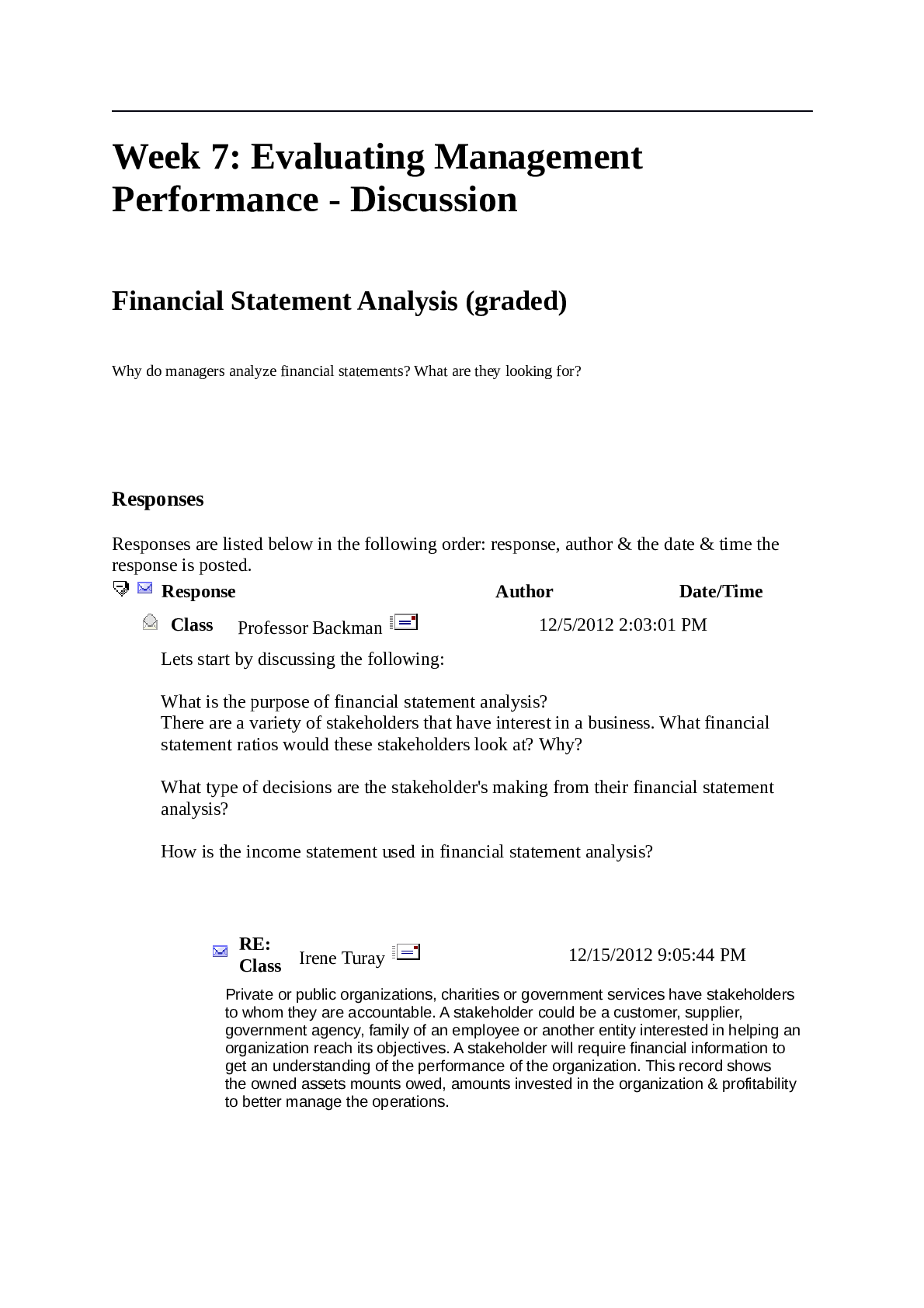General Science > DISCUSSION POST > SC1 228 WEEK 7 DISCUSSION NUTRITION THROUGHOUT THE LIFE CYCLE – GRADED AN A+ (All)
SC1 228 WEEK 7 DISCUSSION NUTRITION THROUGHOUT THE LIFE CYCLE – GRADED AN A+
Document Content and Description Below
SC1 228 WEEK 7 DISCUSSION NUTRITION THROUGHOUT THE LIFE CYCLE – GRADED AN A+ There are many factors that influence our risk for chronic diseases, such as cancer. Check out this TedEd Animation les... son: "Can we eat to starve cancer?" (Links to an external site.) What are your thoughts on this? What changes can you make to your own lifestyle to reduce your risk for cancers? To answer this question "Can we eat to starve cancer?" the answer is yes. “For a long time, the prevailing thought was that altered metabolism in cancer cells was the result of genes and mutations that determined metabolism,” says Jason Locasale, a cancer biologist at Duke University. “Now, as we know, it’s a complex interaction of environment and genes, and one of the major factors at play is nutrition.” The importance of nutrition has long been accepted for conditions such as diabetes and hypertension, diagnoses that come with well-known dietary prescriptions. Even the most commonly used drug in type 2 diabetes, metformin, has been found in clinical trials to be inferior to diet and exercise. Cell biologists like Locasale see extending that line of thinking to cancer as a logical step, because at the cellular level, cancer is also a disease of metabolic pathways. (Hamblin, 2019). About 90-95 percent of all cancers are environmentally induced. That means you potentially have a LOT of control over your level of cancer risk. For example, diet accounts for 30-35 percent of environmentally caused cancers. (How to Starve, 2020). Red wine has been found to inhibit blood vessel growth. Strawberries are also potent inhibitors. Actually, dozens of foods turn out to be naturally anti-angiogenic including: What Foods Starve Cancer Cells to Death? ▪ Green tea ▪ Earl Grey tea (remember this?) ▪ Blackberries ▪ Ginseng ▪ Raspberries ▪ Soybeans ▪ Blueberries ▪ Bok Choy ▪ Oranges ▪ Grapefruit ▪ Lemons ▪ Apples ▪ Pineapple ▪ Cherries ▪ Red grapes ▪ Kale ▪ Tomatoes (How to Starve, 2020). Studies reported by the National Institutes of Health have found that at least 75 to 80 percent of cancers in the United States may be prevented by lifestyle changes. Here are some steps you can take to decrease your risk of developing cancer. (Lifestyle Changes, 2019). There are many changes can you make to your own lifestyle to reduce your risk for cancer. 1. Exercise for Cancer Prevention - When you exercise, you are not only making yourself healthier, but you are also decreasing your risk of certain types of cancers as well. The American Institute for Cancer Research currently recommends that everyone exercise for at least 45 minutes per day. 2. Eat Your Fruits and Vegetables - A well-balanced diet is advantageous for many reasons. A diet rich in fruits and vegetables greatly reduces your risk of not only developing cancer but heart disease, diabetes, and other potentially deadly illnesses, too. 3. Limit Red Meat and Avoid Processed Meats - Numerous studies show that a diet high in animal fat increases the risk of several types of cancer, including colon cancer. And while a high intake of red meat is of concern, packaged and processed meats present an even greater risk. 4. Avoid Smoking and Exposure to Smoke - Smoking is the most significant cancer risk factor we can control. It is responsible for not only lung cancer but many other types of non-pulmonary cancer 5. Know Your Family Medical History – For years, my family medical history has finally caught the light and a newfound reality, my family has so many genetic based medical predispositions. I guess because food has always been a mainstay of our family, We come from a long line descendants of Louisiana (Southern) chefs, bakers, and caterers. Which means we inherited a host of “diet related” environmental risks. While a family history of cancer is one of those risk factors you can't change, it can help us make better choices when it comes to avoiding cancer. Most of us know, for example, that certain genes can predispose a person to breast cancer. (Fayed, 2020). References Fayed, L. (2020, January 27). 10 lifestyle changes to help prevent cancer. Very Well Health. Retrieved December 7, 2020, from https://www.verywellhealth.com/top-ways-to-prevent- cancer-513787 Hamblin, J. (2019, May 19). You can't 'starve' cancer, but you might help treat it with food. The Atlantic. Retrieved December 7, 2020, from https://www.theatlantic.com/health/archive/2019/05/food-cancer/589714/ How to starve cancer cells – surprising facts. (2020). All Natural Ways. Retrieved December 7, 2020, from http://www.allnaturalways.com/how-to-starve-cancer-cells-surprising-facts/ Lifestyle changes that may reduce your risk of cancer. (2019, March 13). Cancer Treatment Centers of America. Retrieved December 7, 2020, from https://www.cancercenter.com/community/blog/2019/03/lifestyle-changes-to-reduce- cancer-risk [Show More]
Last updated: 1 month ago
Preview 1 out of 3 pages

Reviews( 0 )
Document information
Connected school, study & course
About the document
Uploaded On
Mar 20, 2024
Number of pages
3
Written in
Additional information
This document has been written for:
Uploaded
Mar 20, 2024
Downloads
0
Views
13

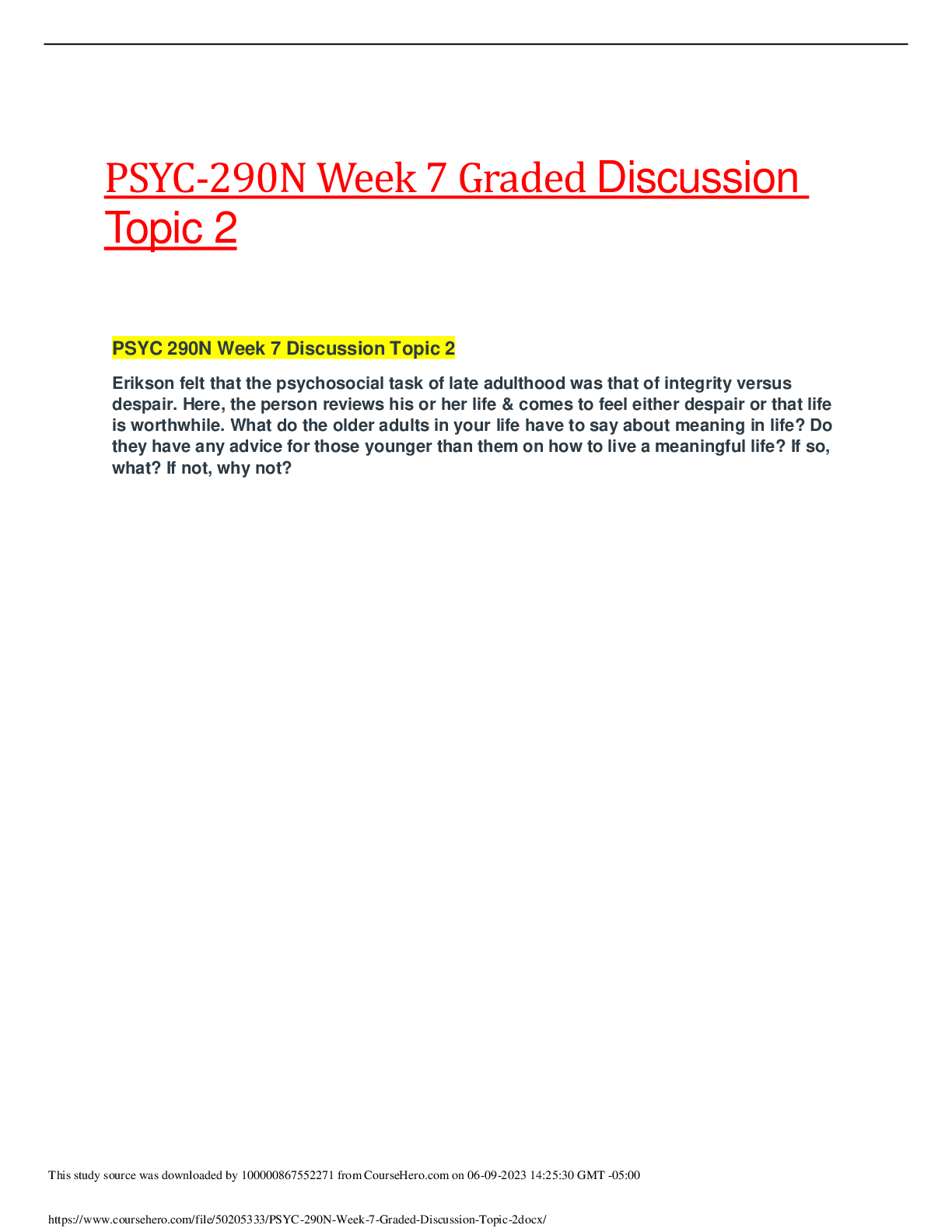
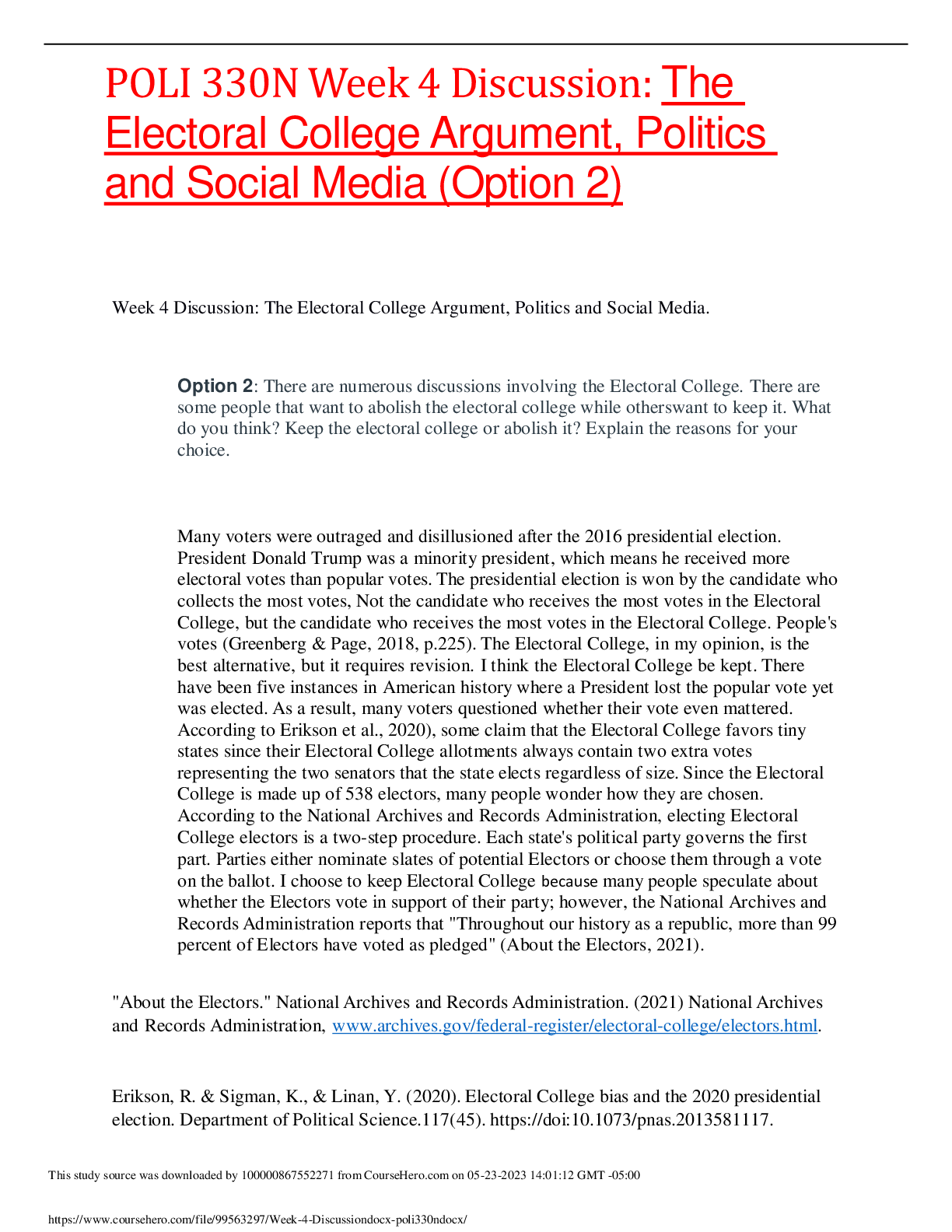
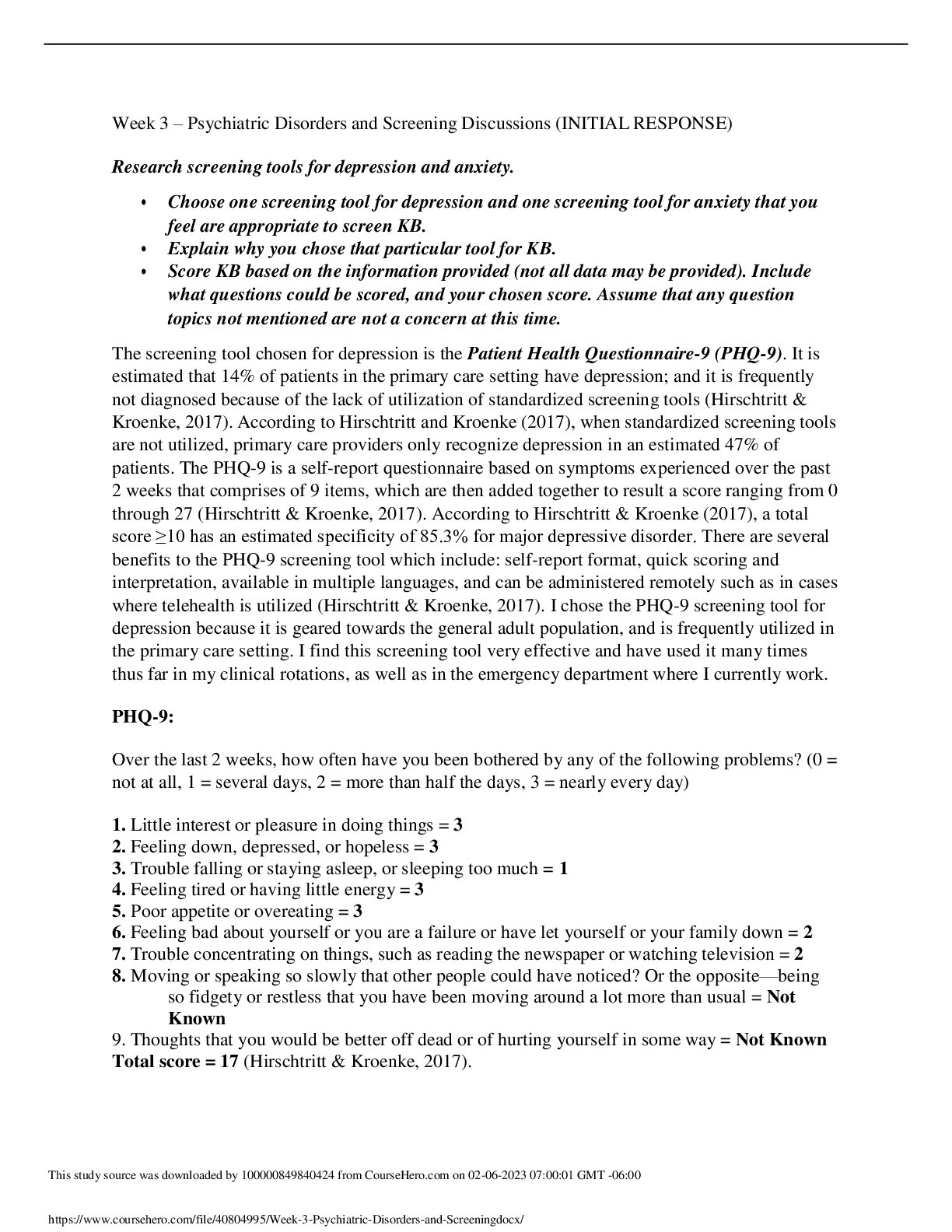
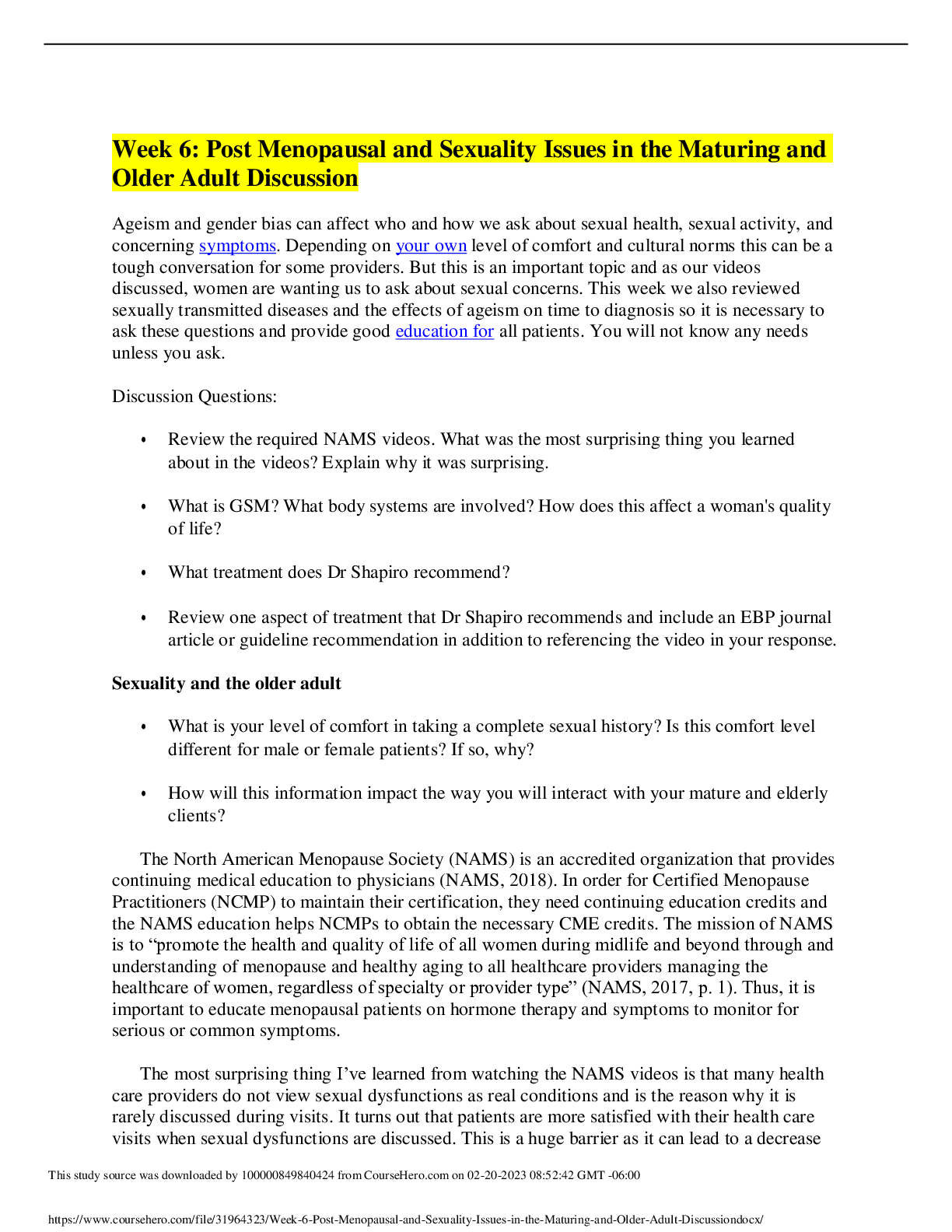
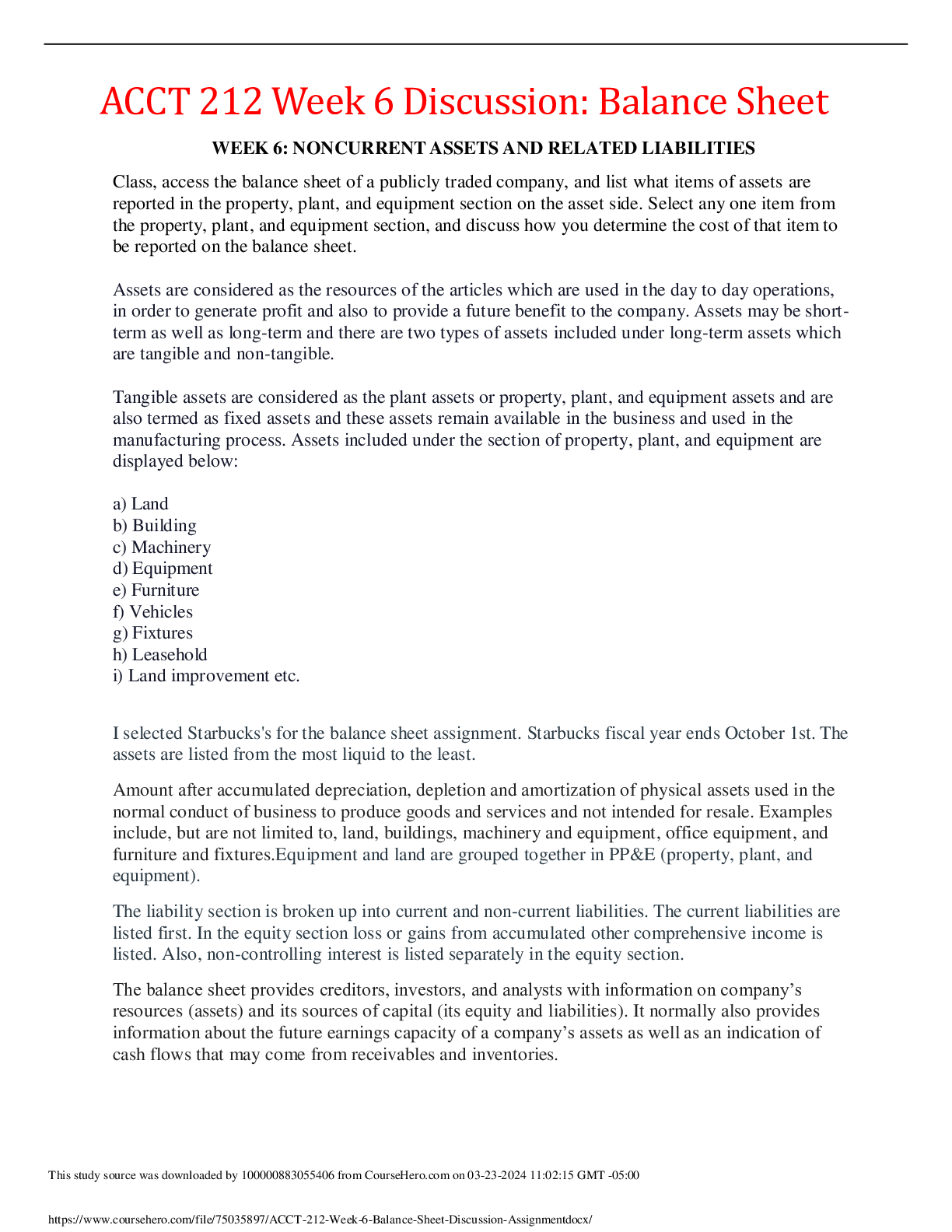
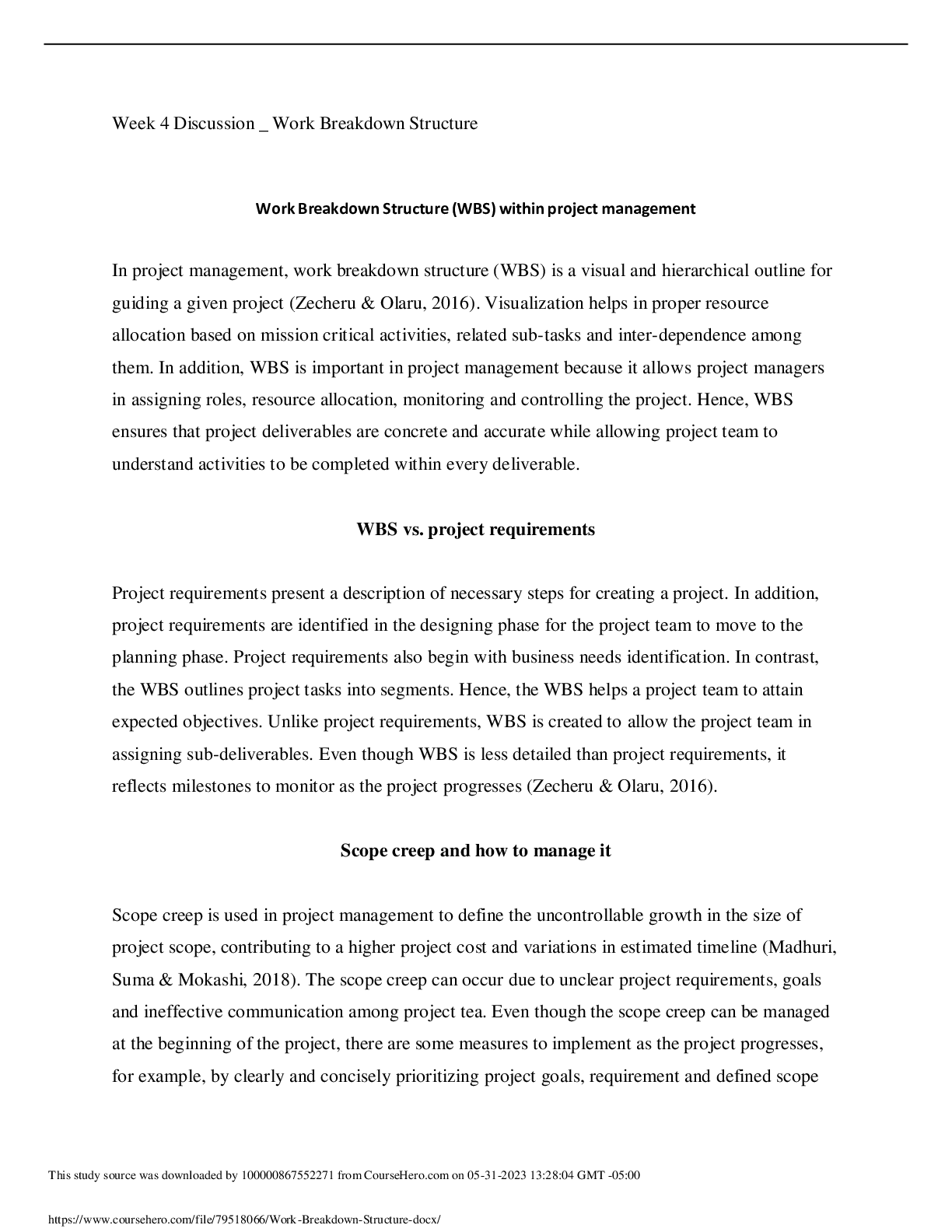
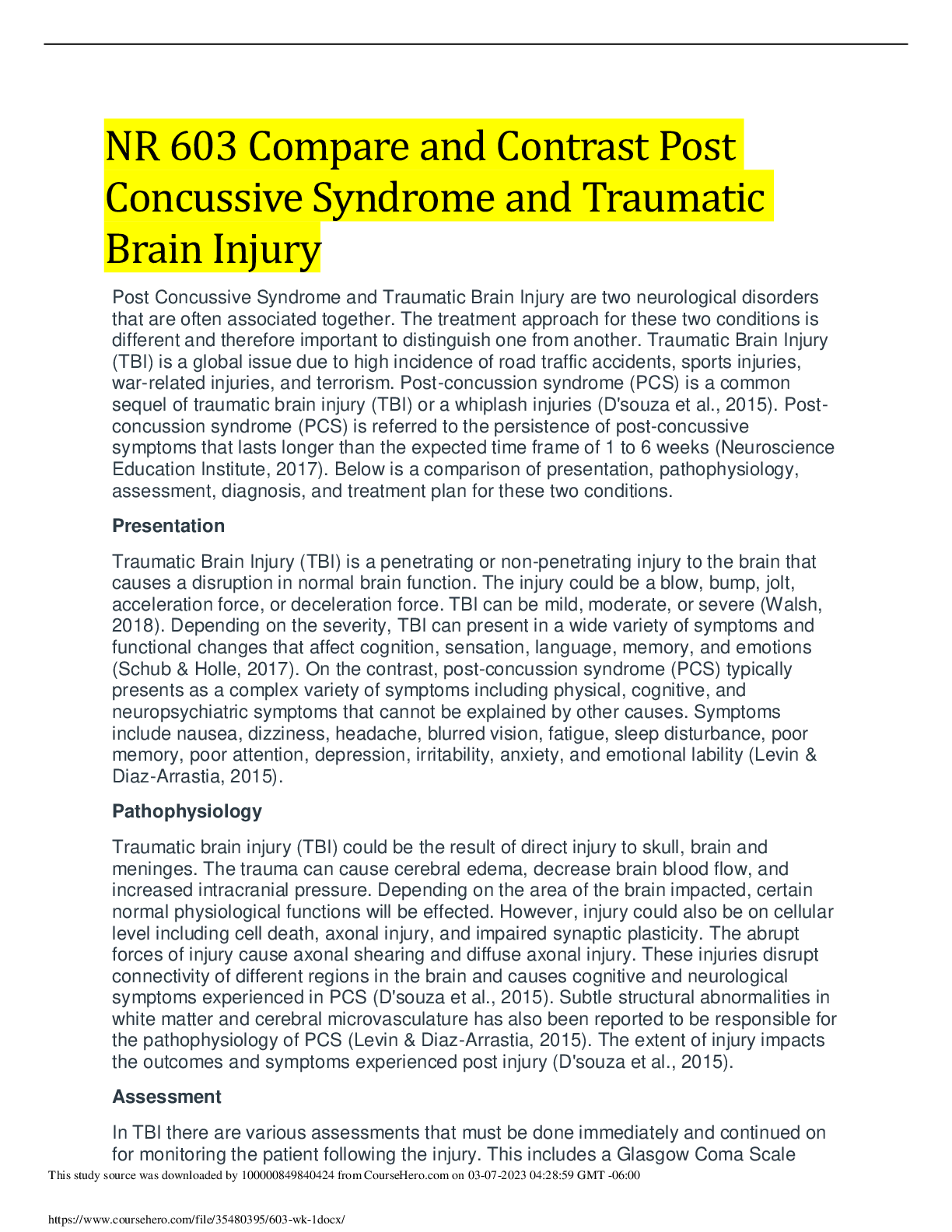

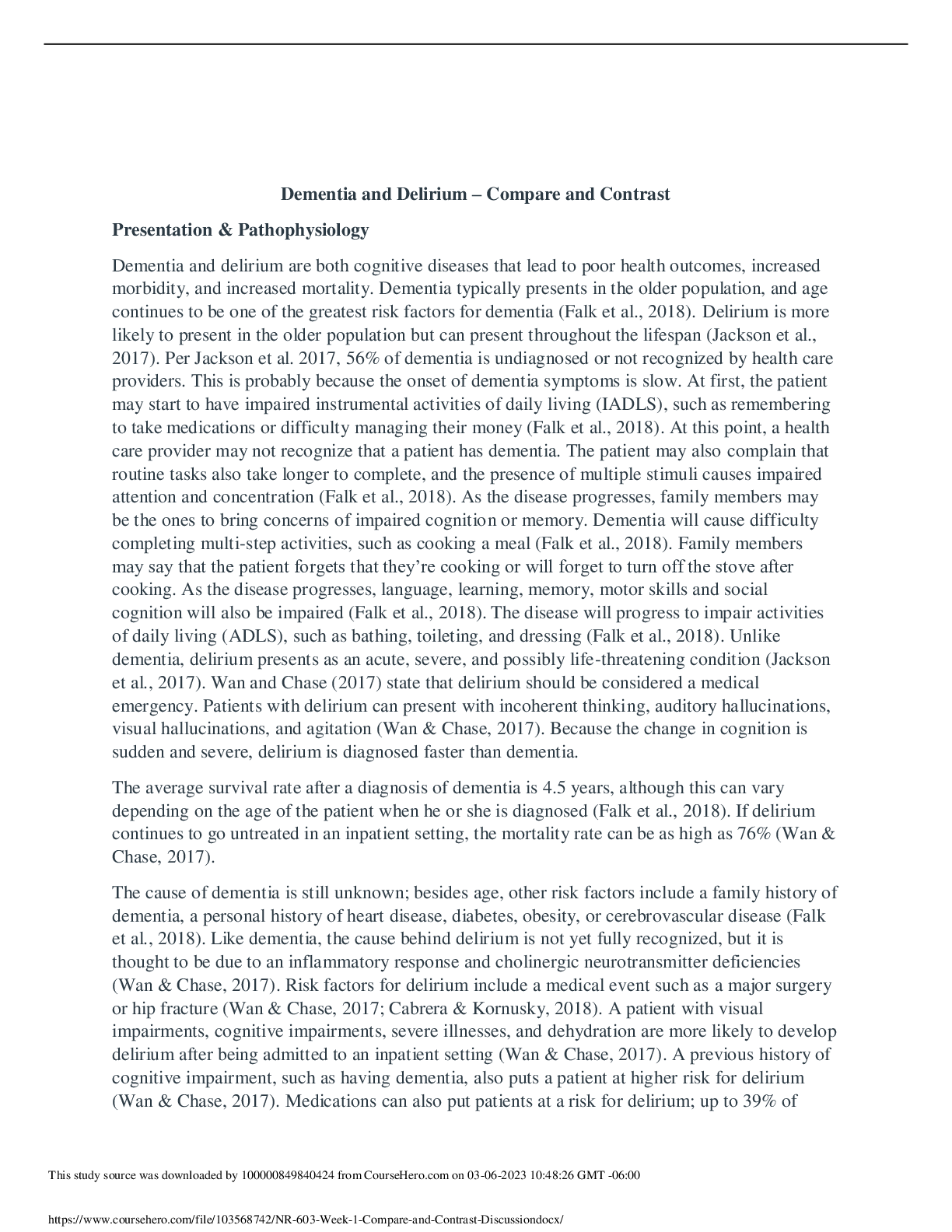

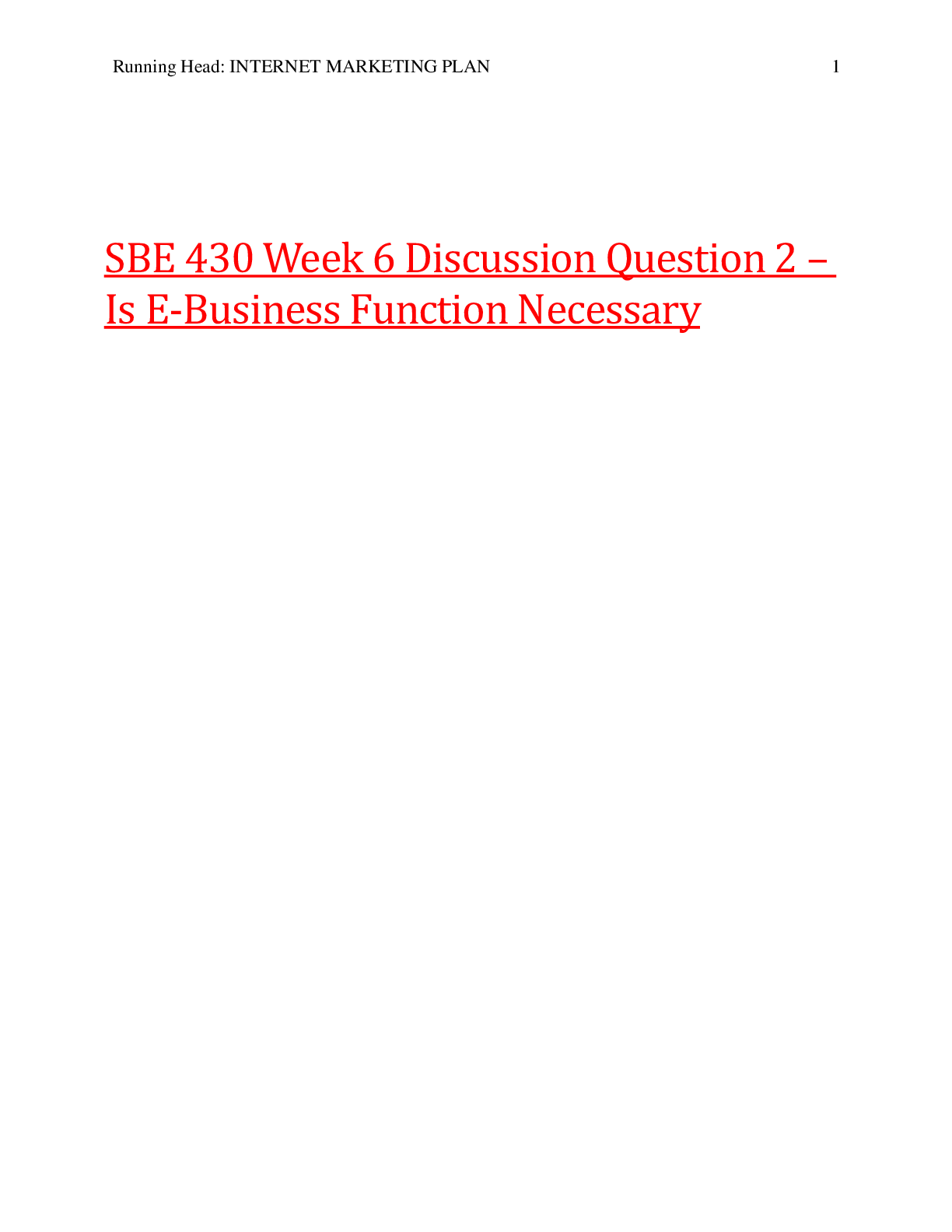
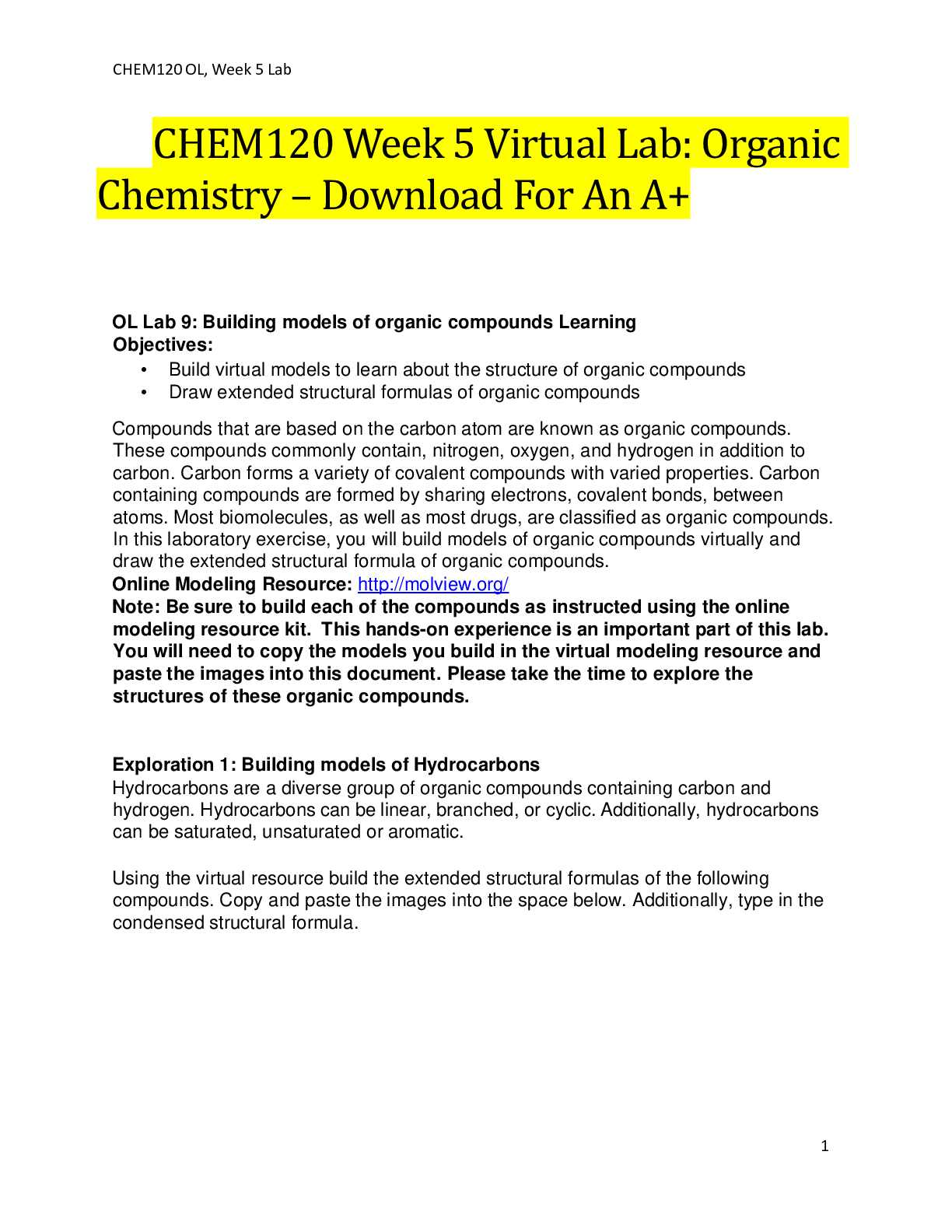
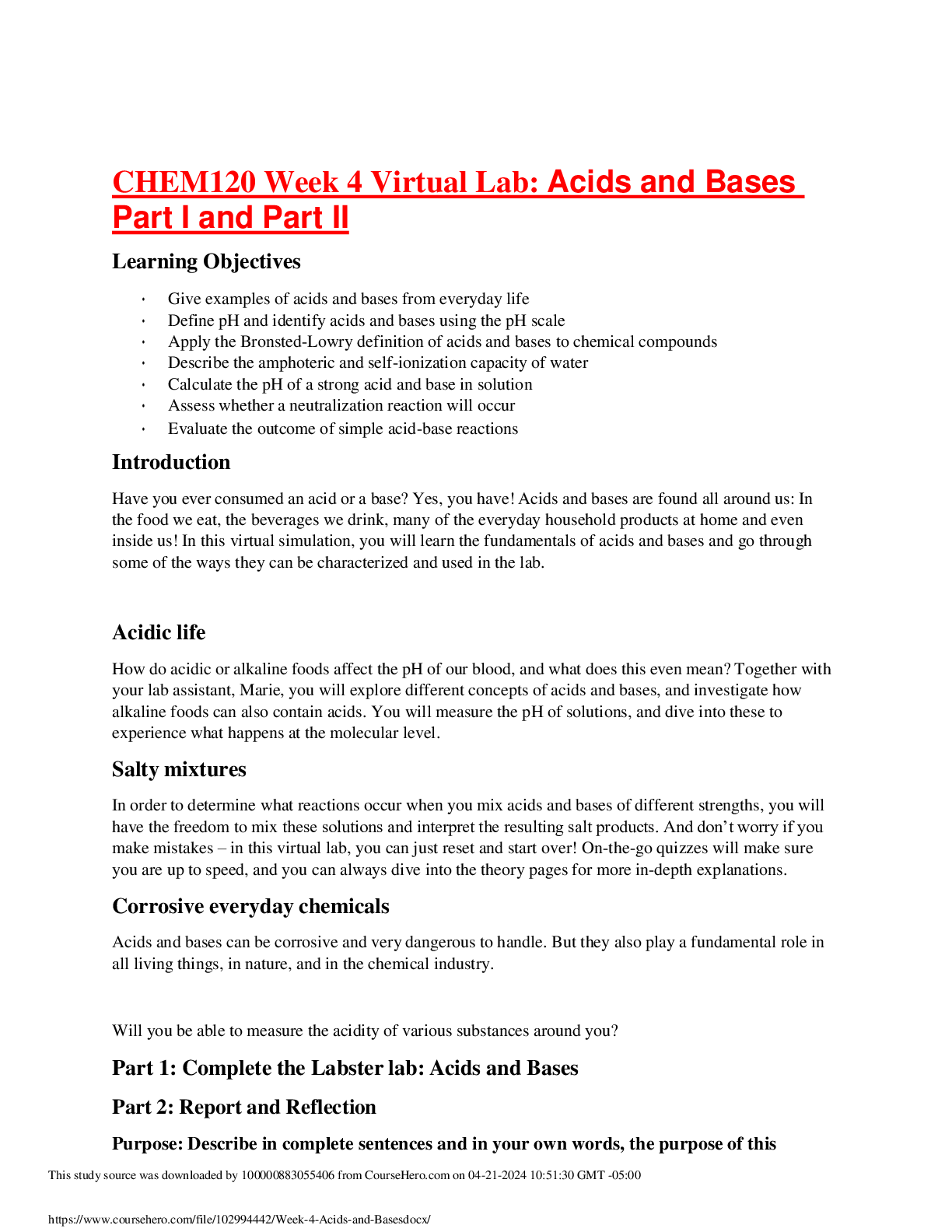
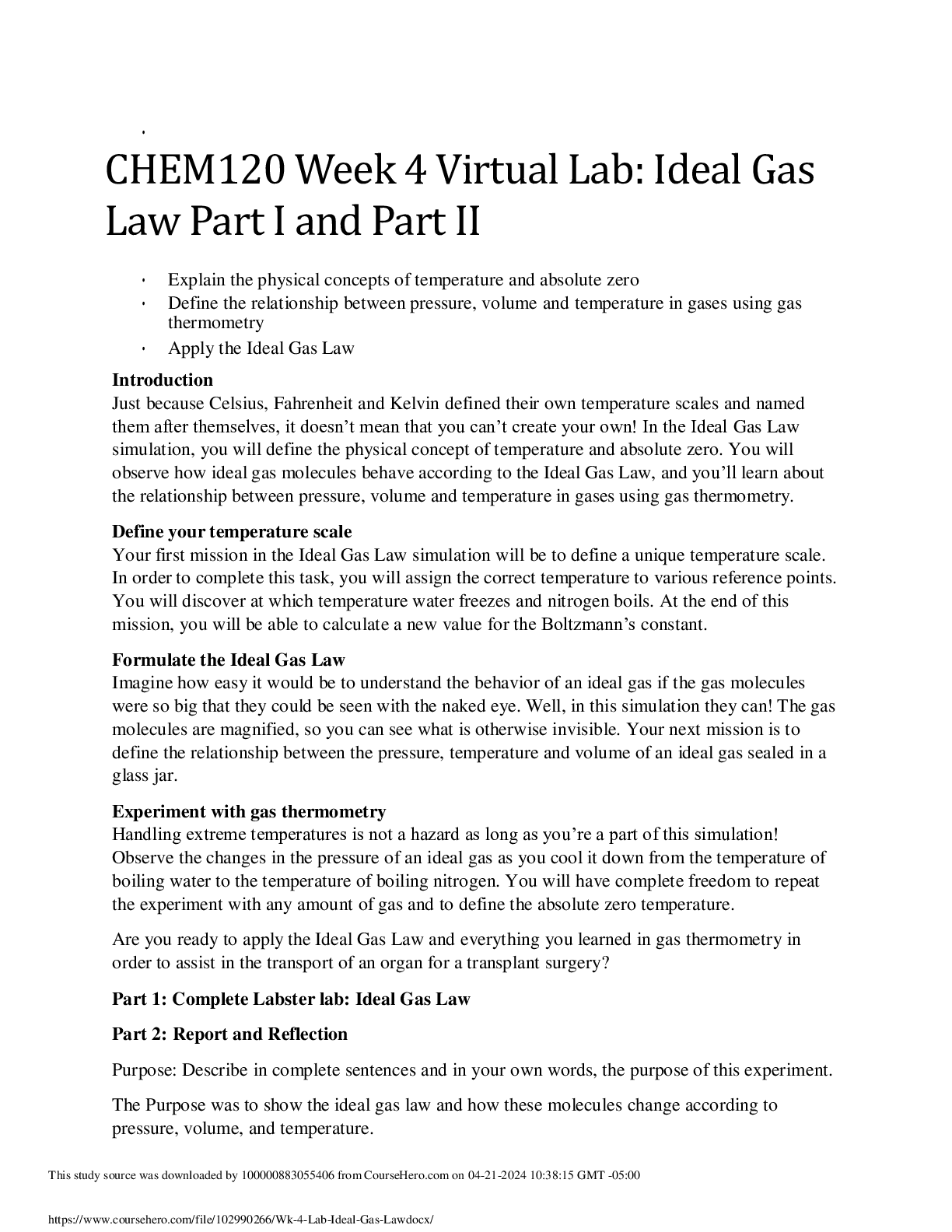
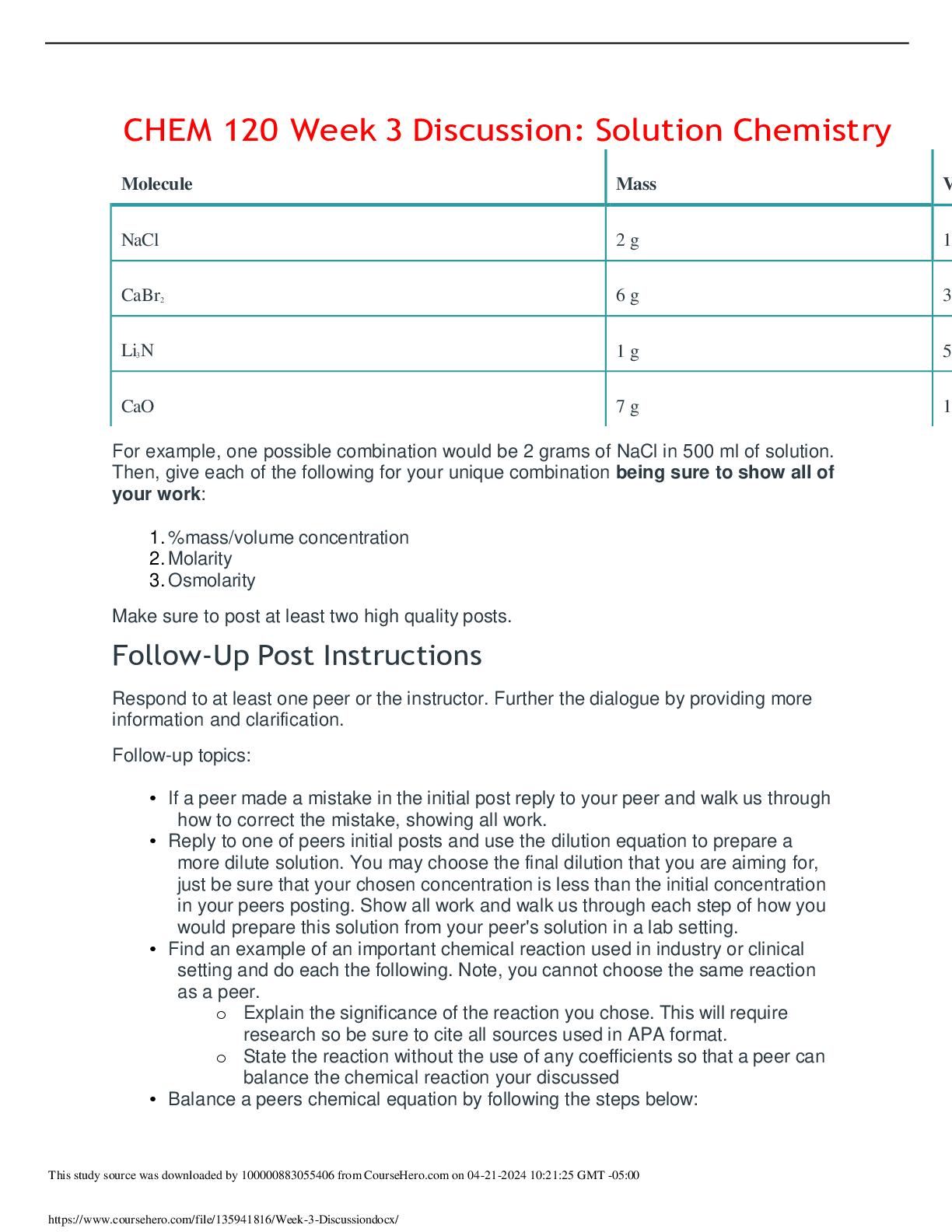
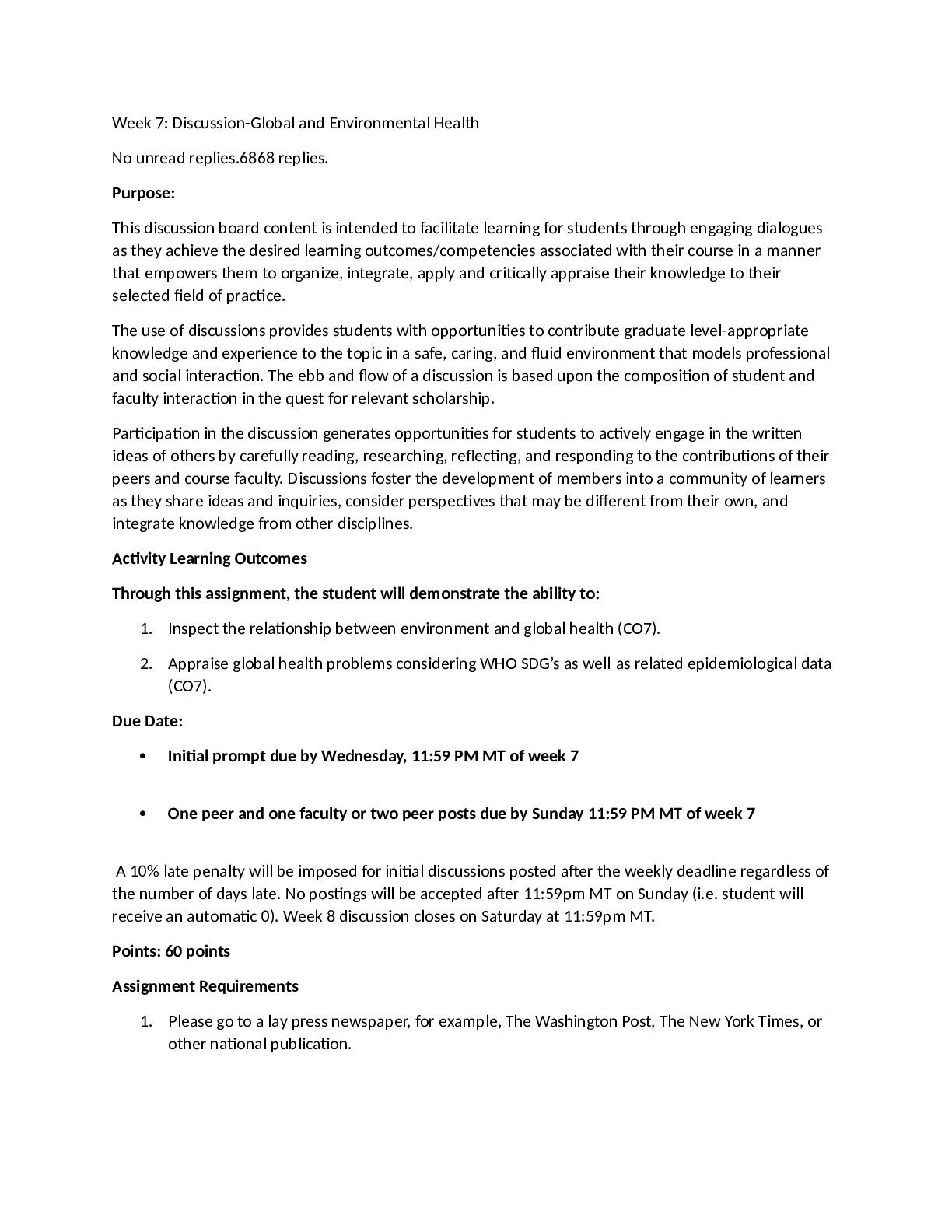
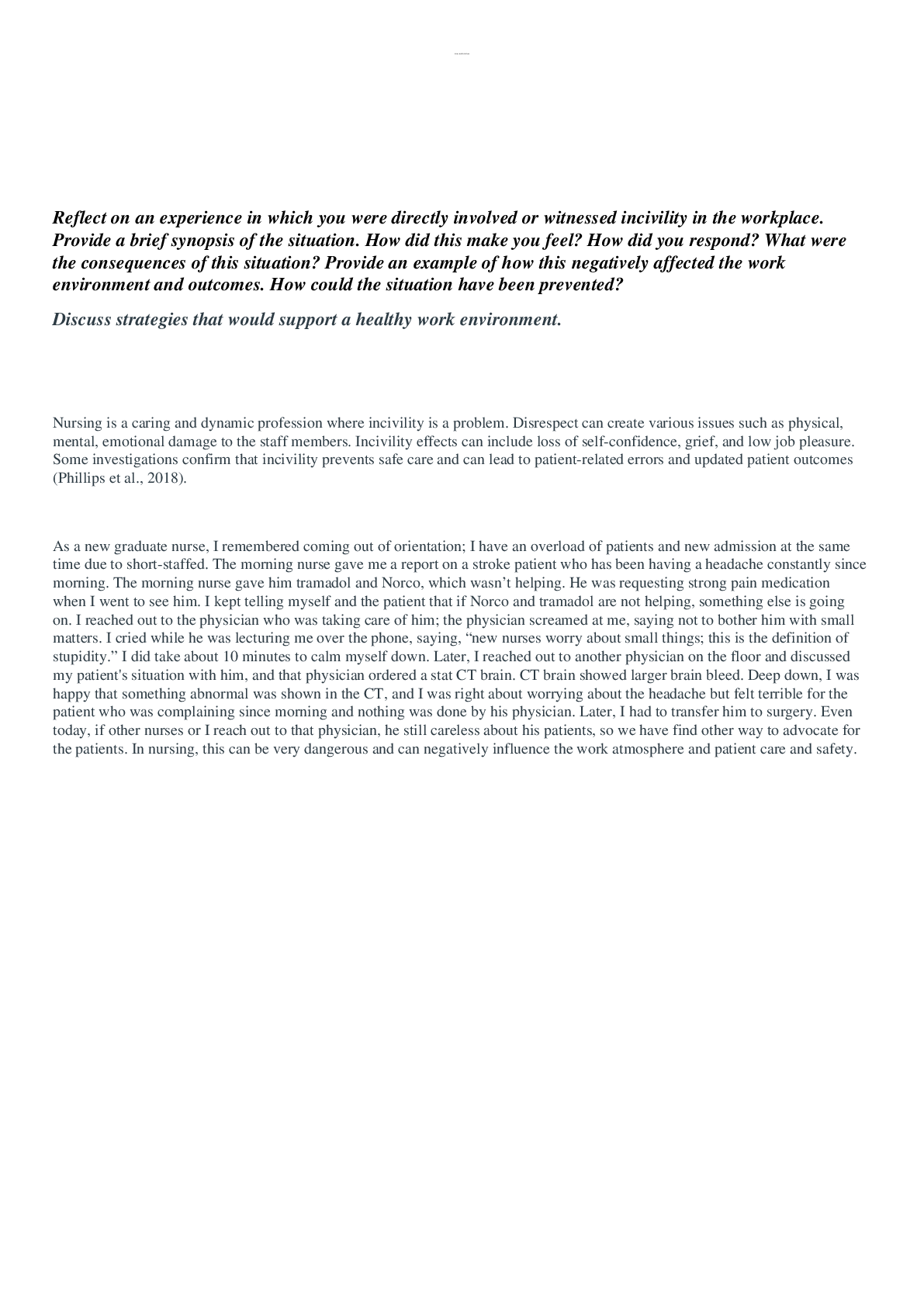
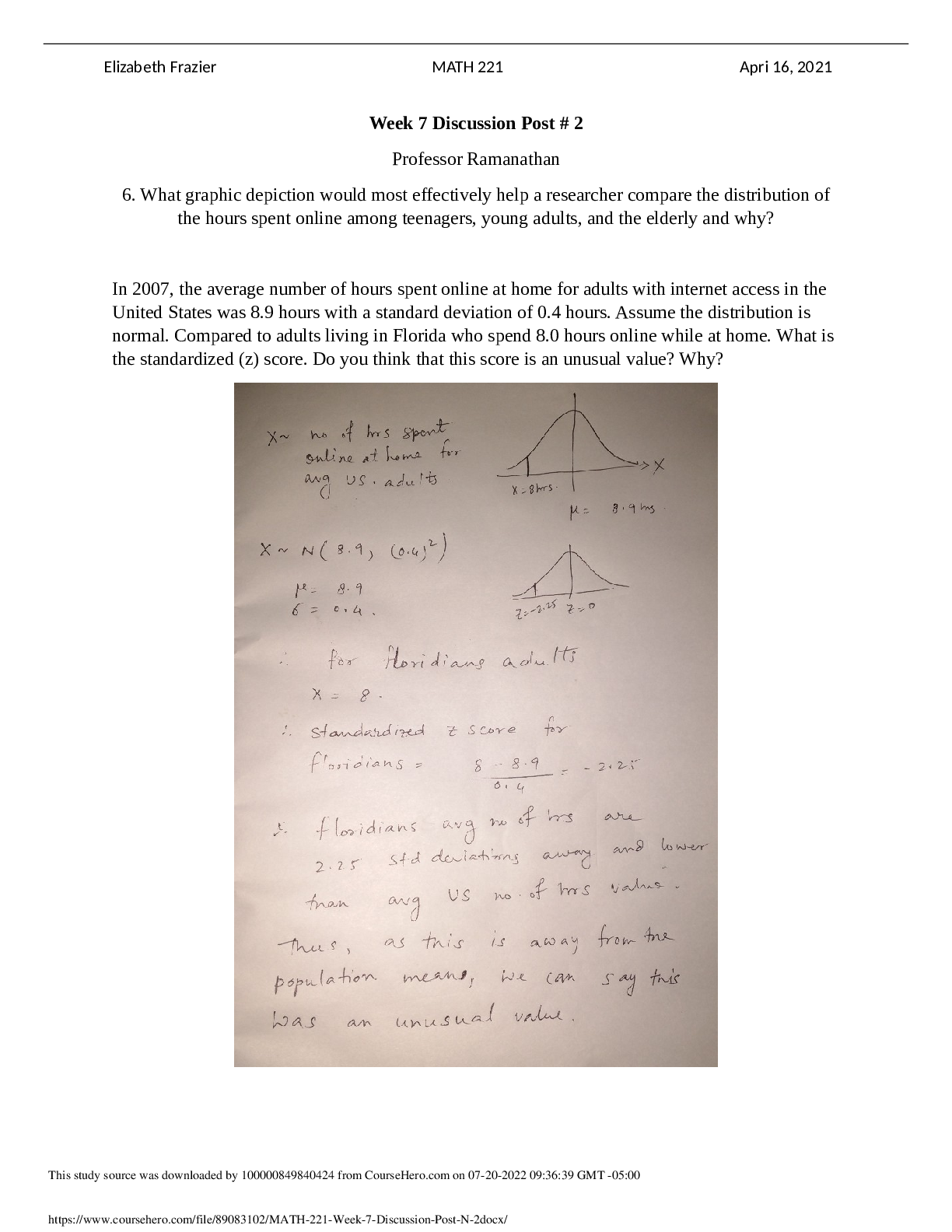
.png)
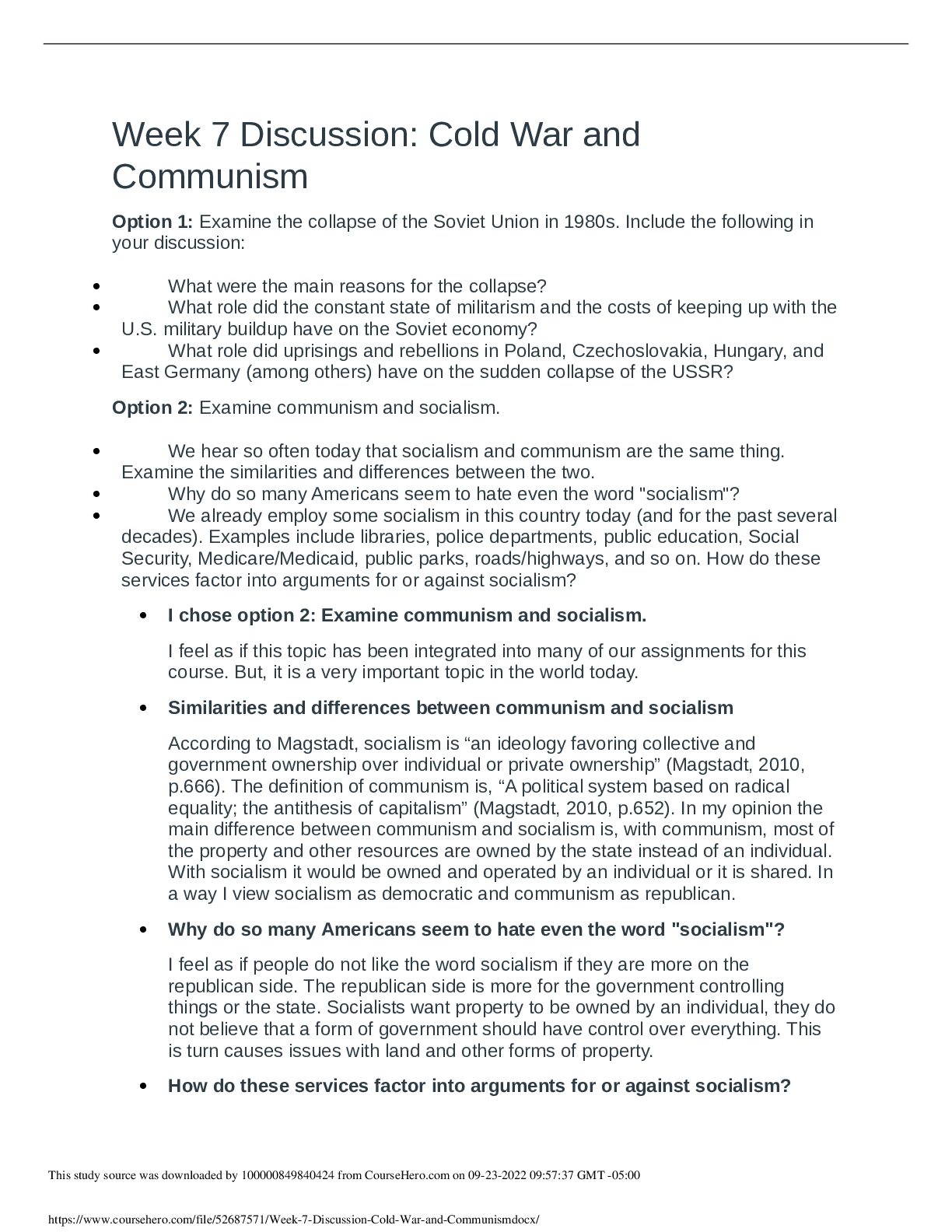
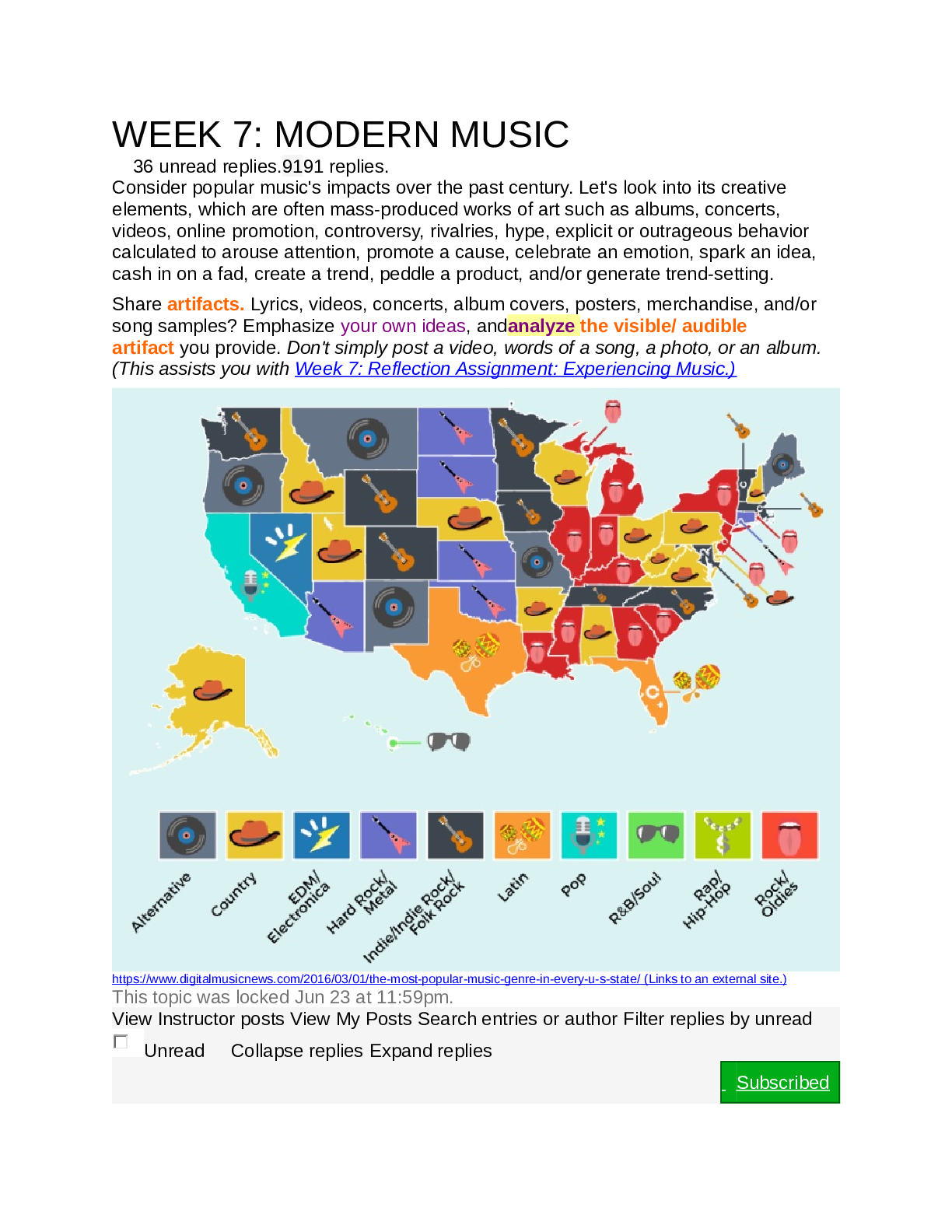
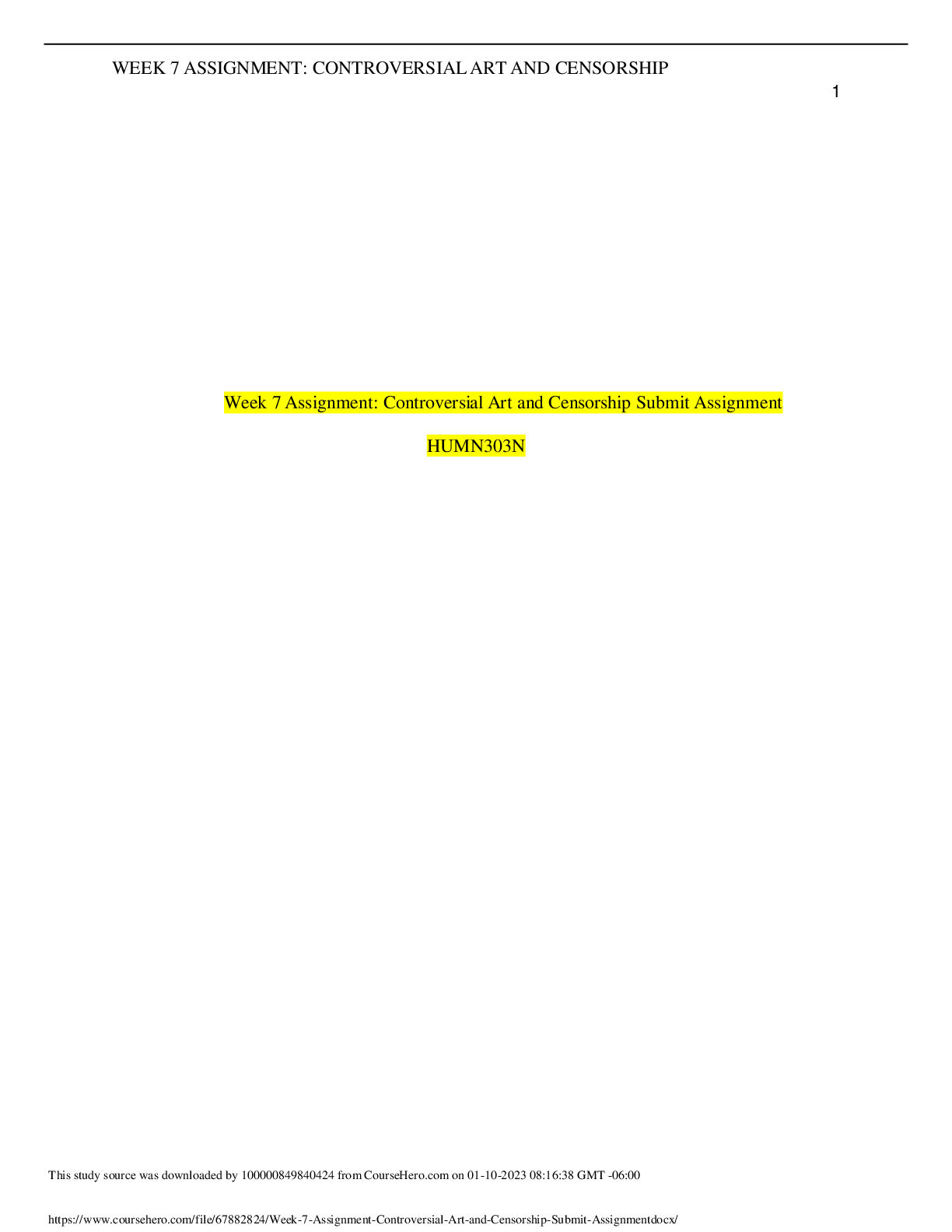
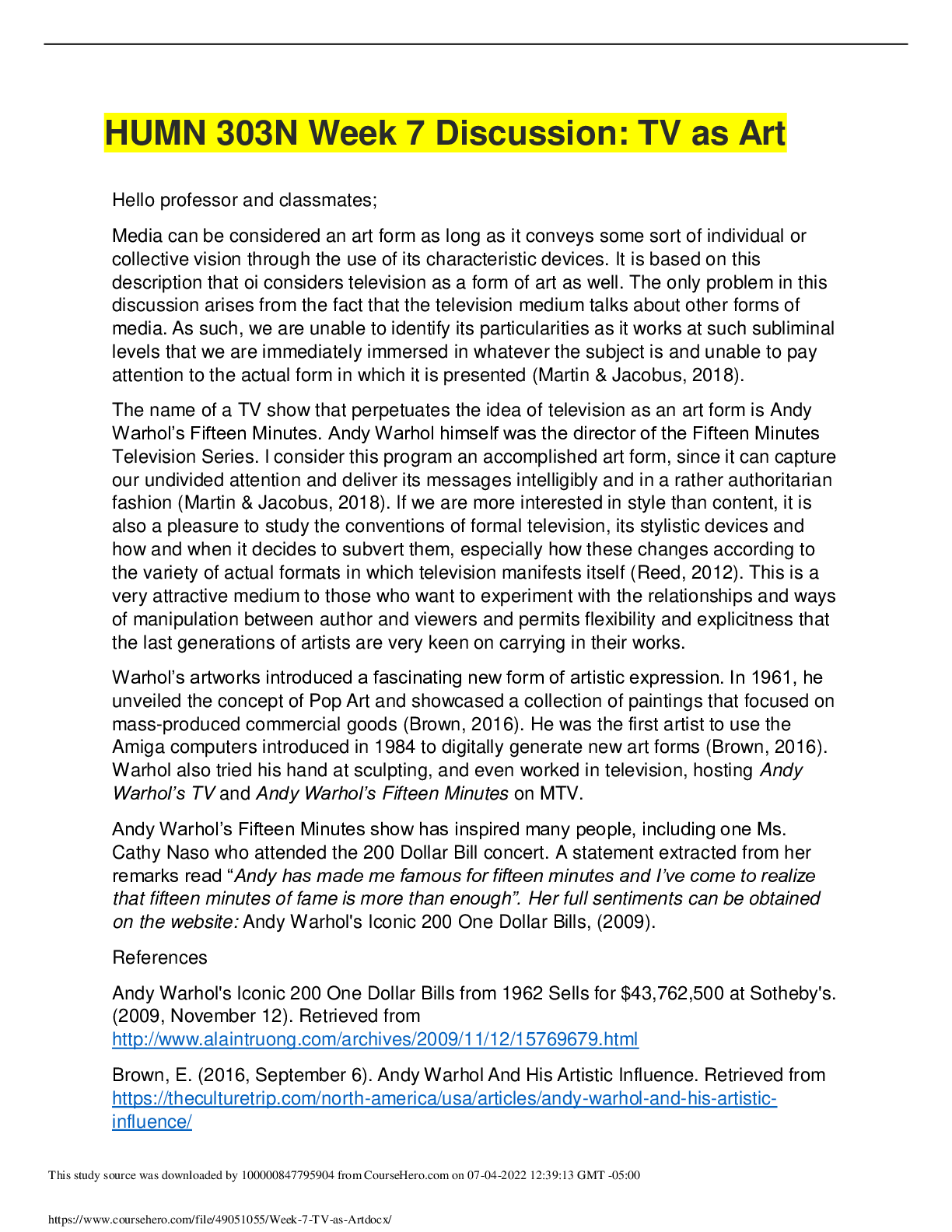

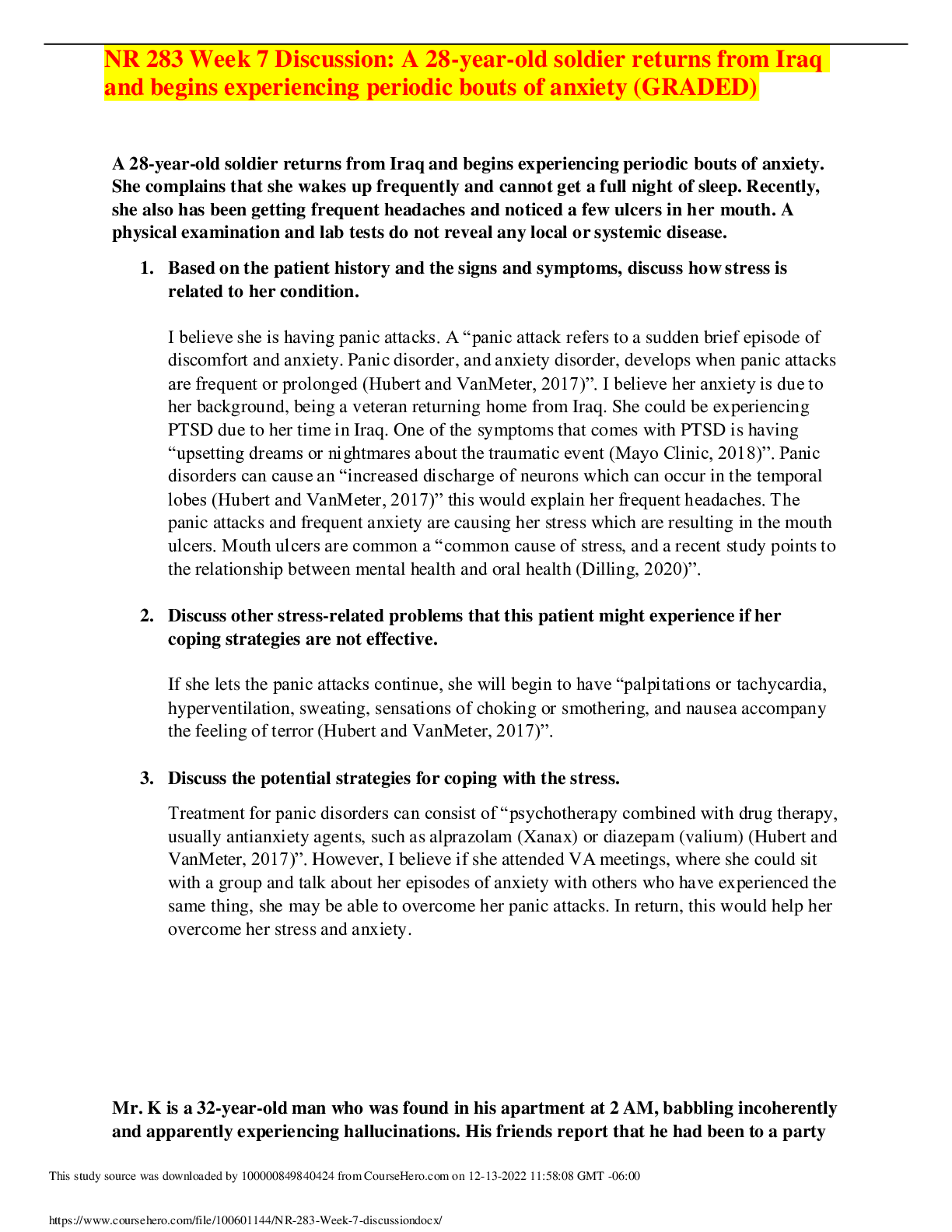
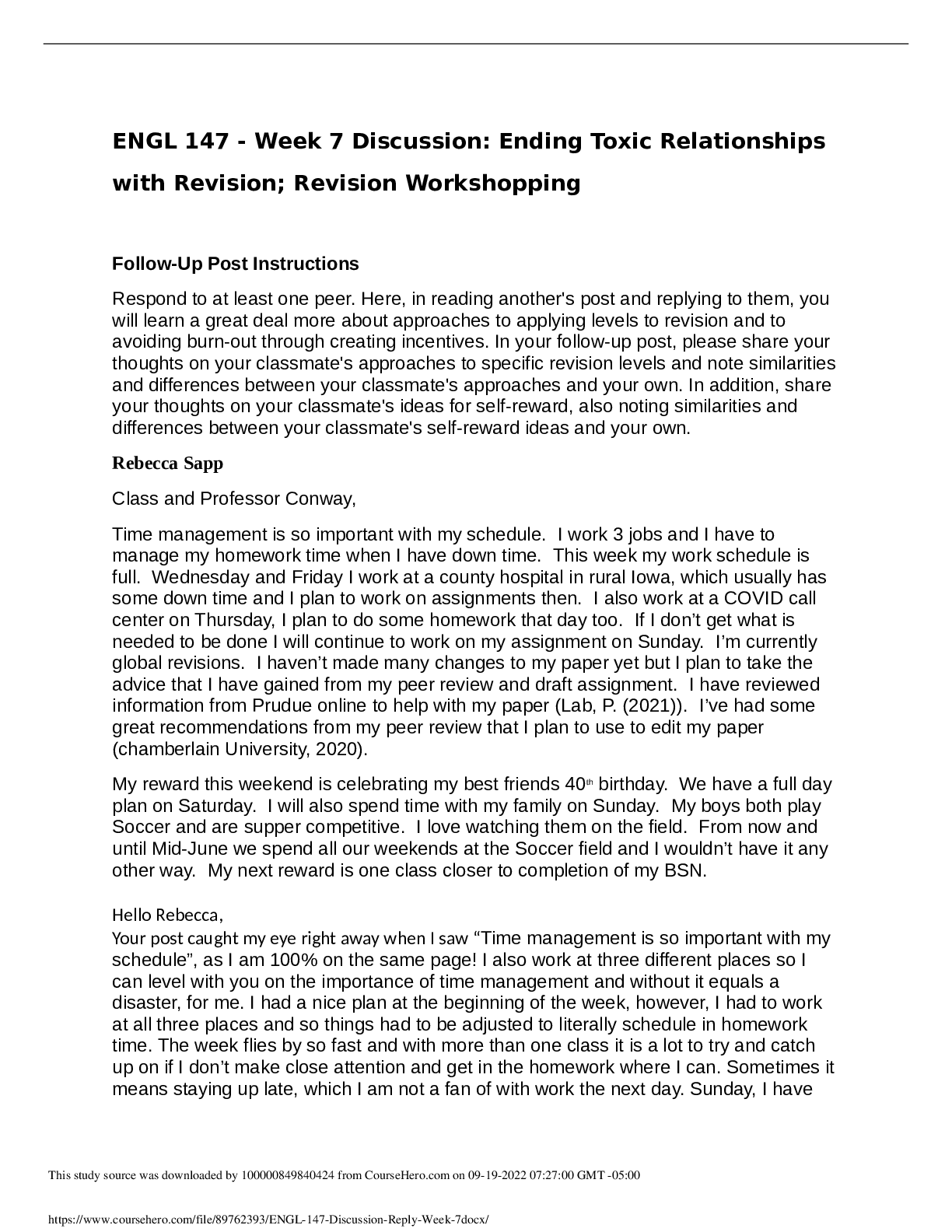
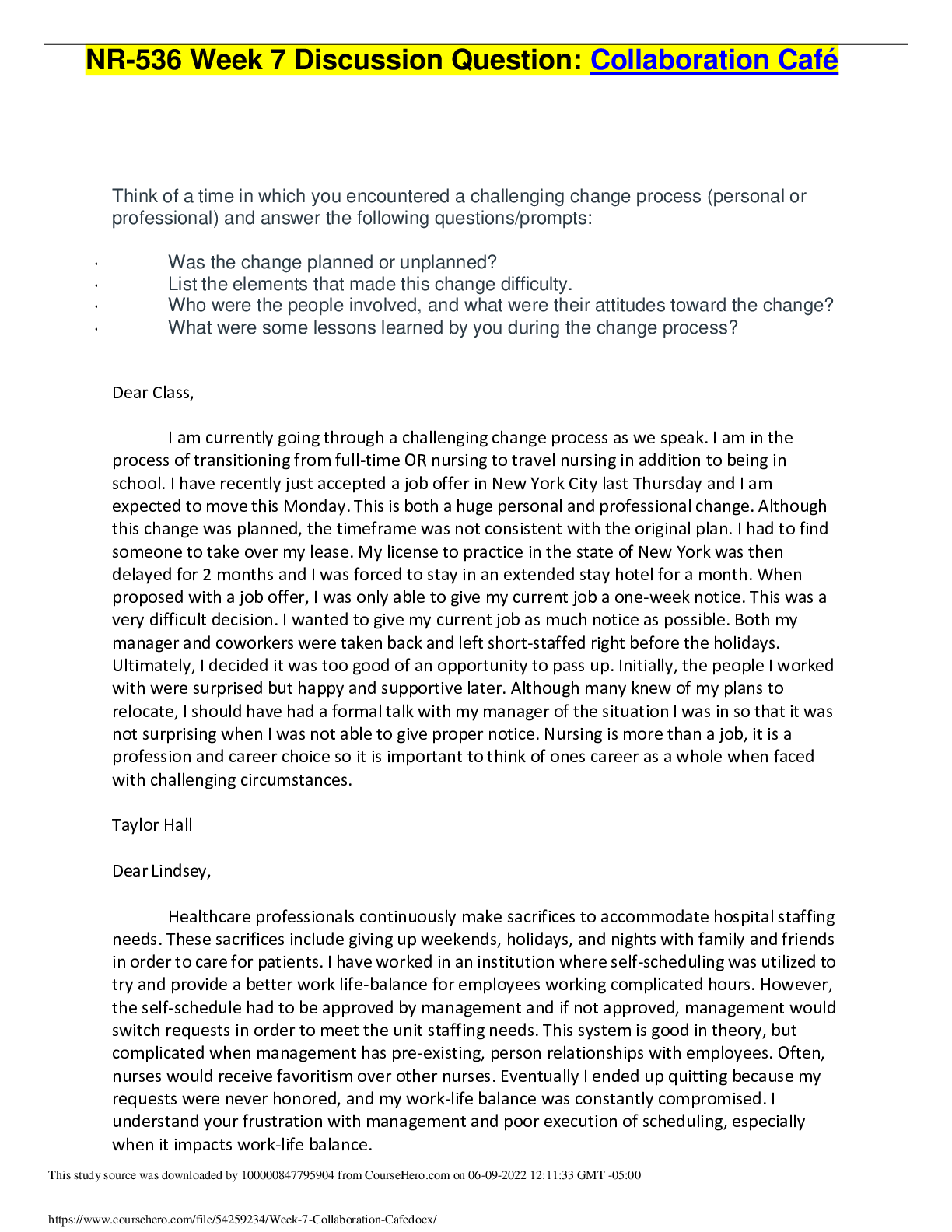
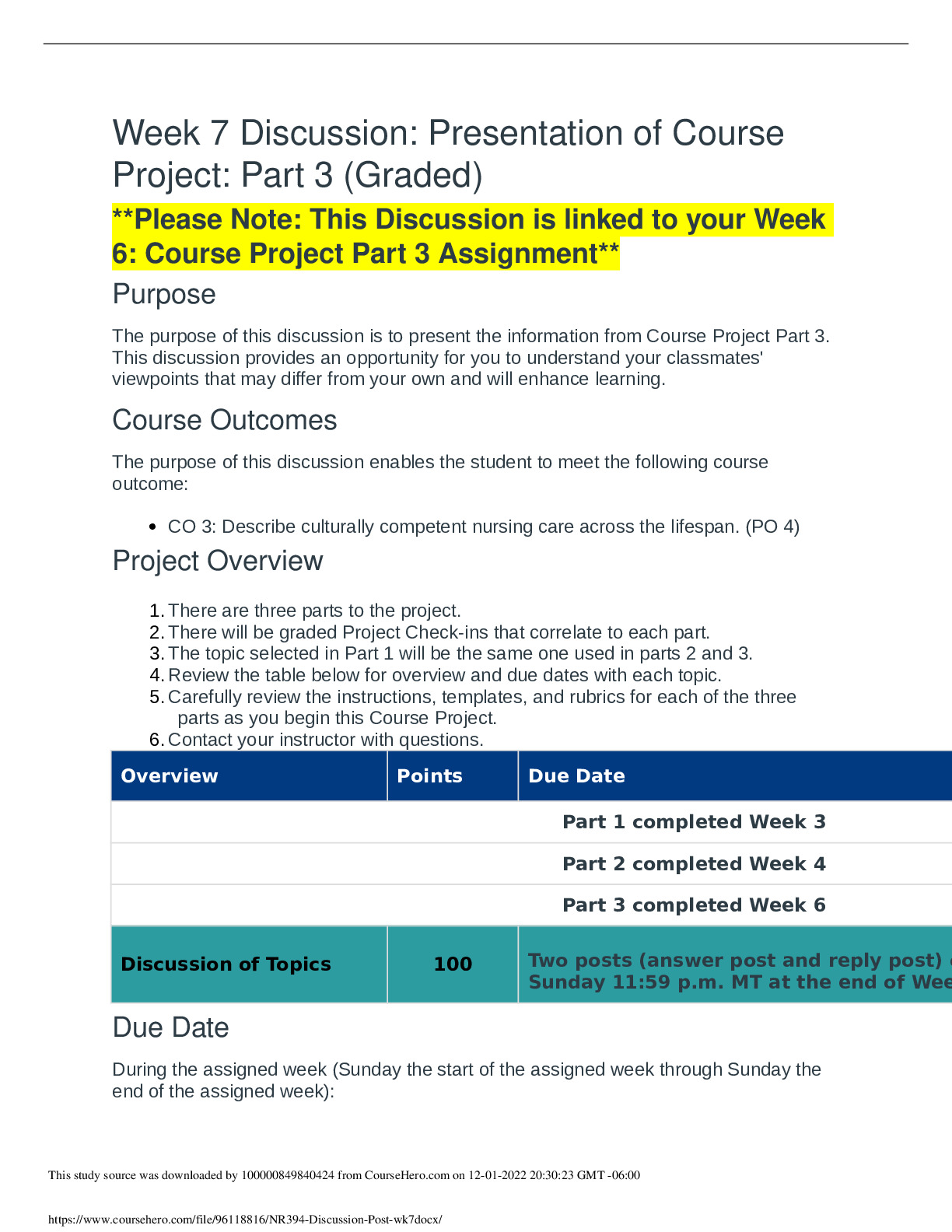
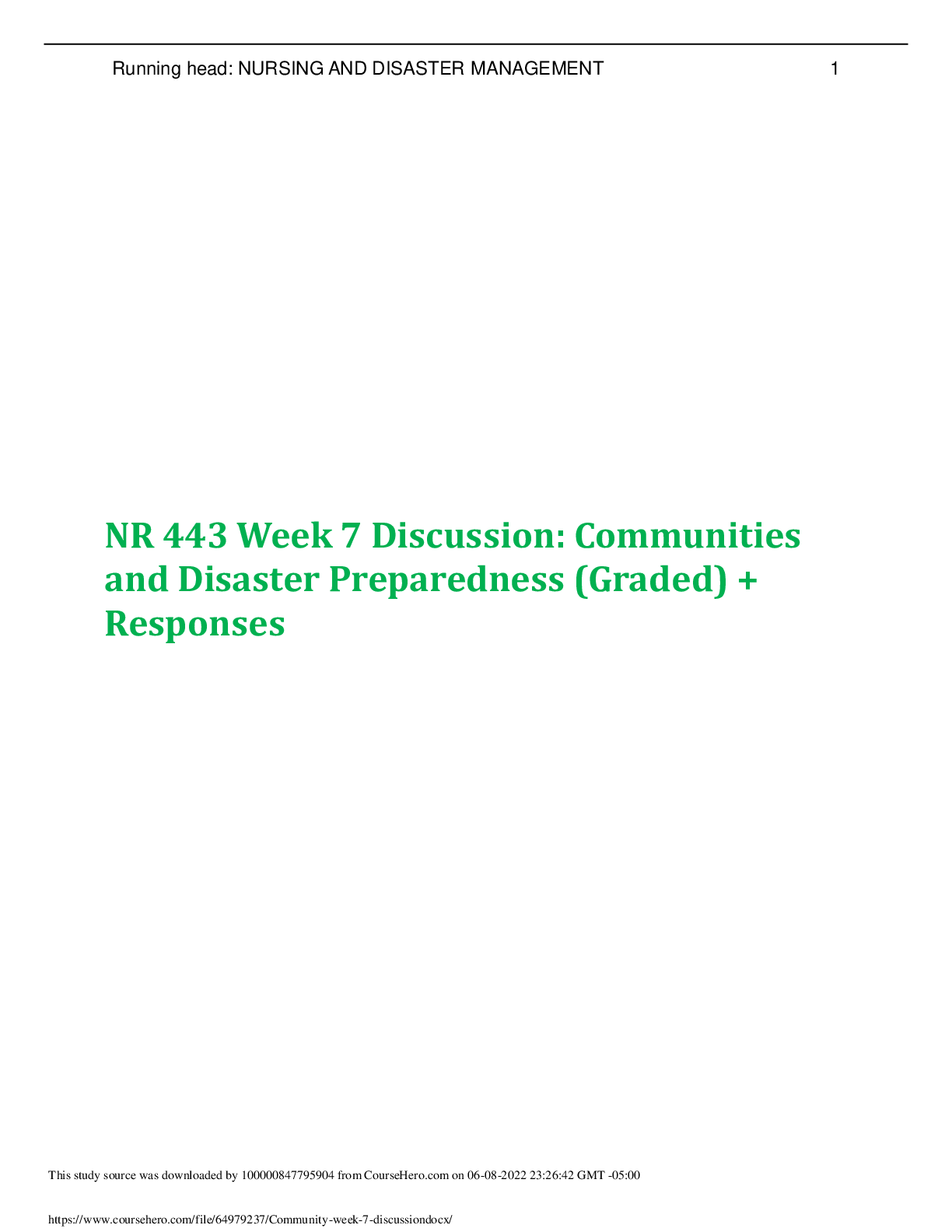
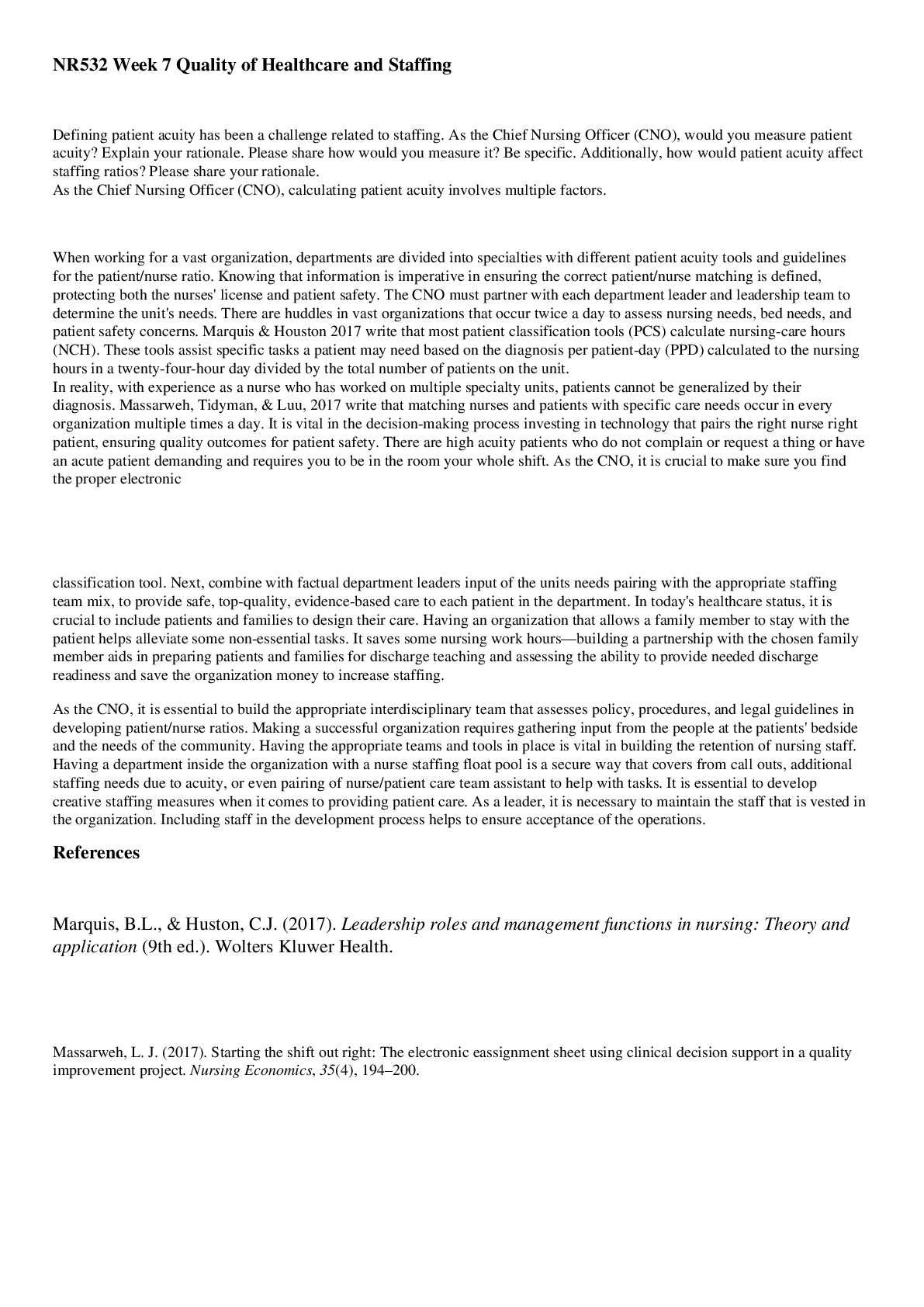
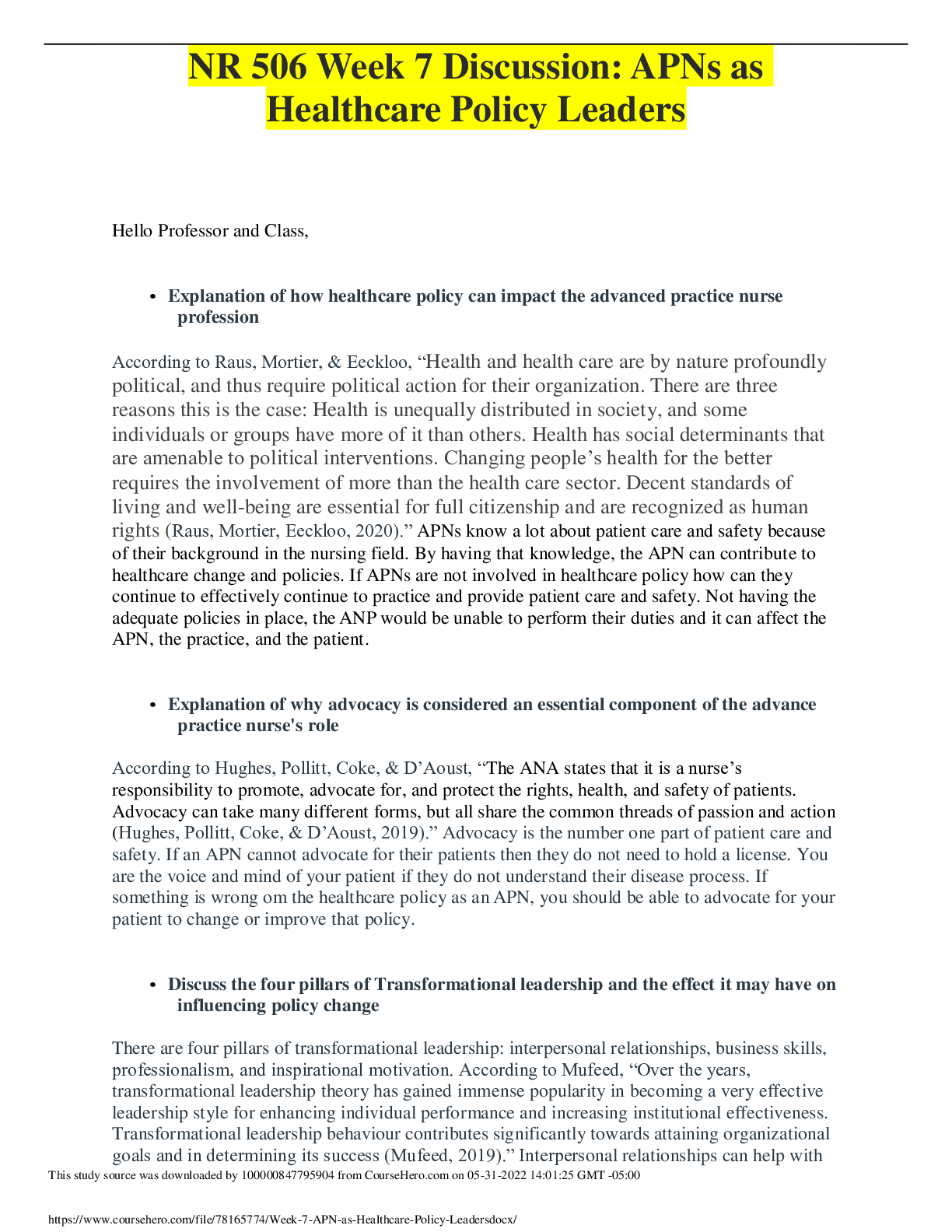

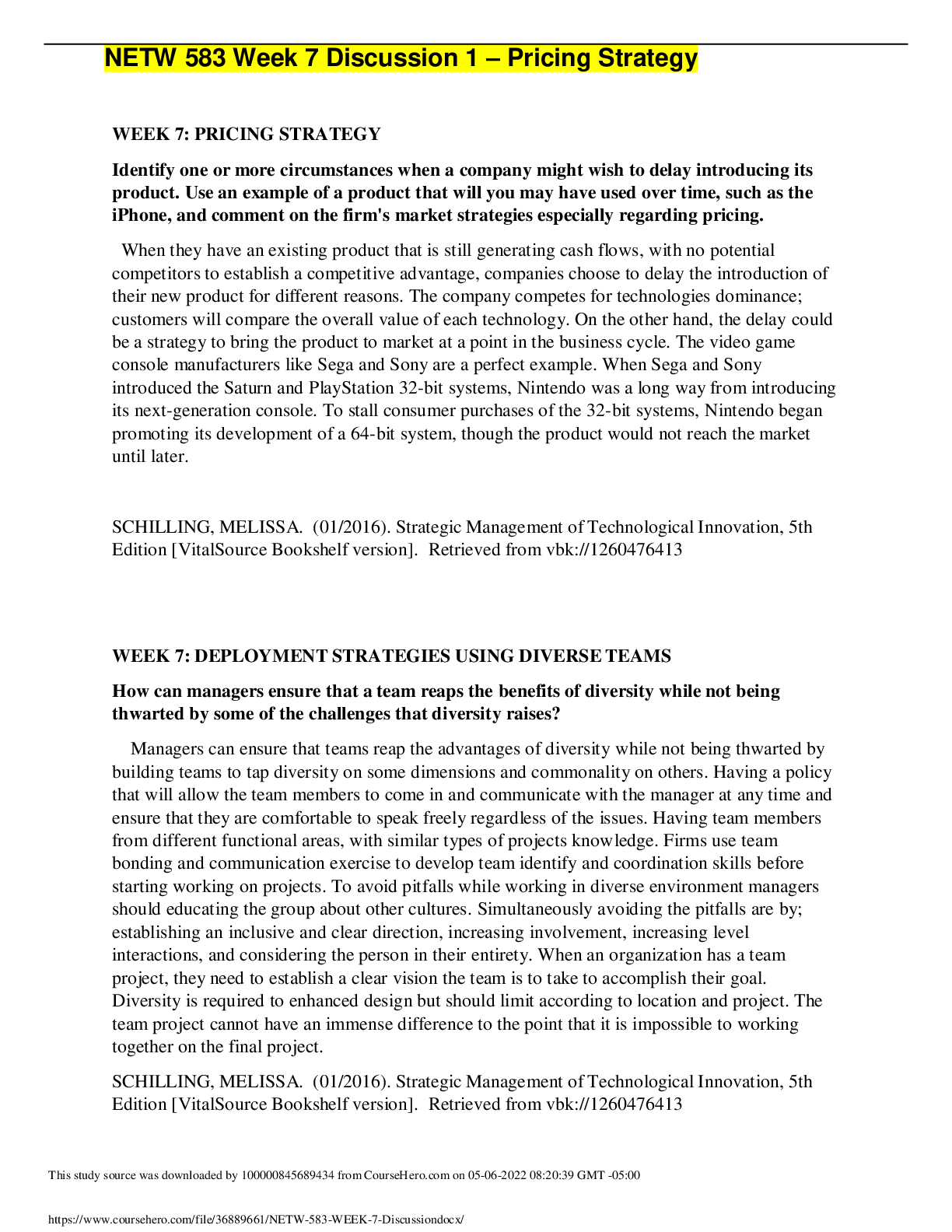
.png)
